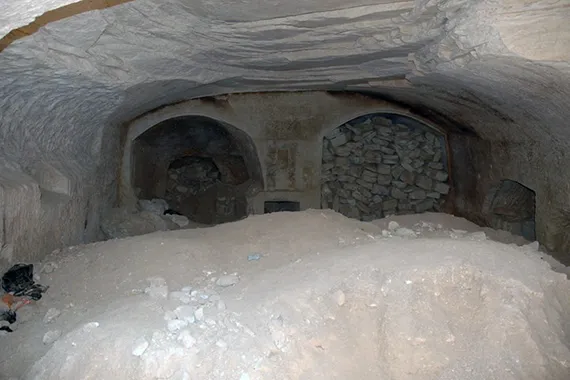
Beit Zedek Tower
For years questions remained what the possible name of the Beit Lehi site was in ancient times. Following Israel becoming a nation, a naming convention was assembled to name all the land parts. The Beit Lehi area was designated as Beit Loya. The reason and meaning of the name has never been explained or defined. No ancient map could be found identifying the area anciently. Then a breakthrough occurred in 2011 as Dr. Oren Gutfeld was researching ancient manuscripts. Reading Wars of the Jews, Book III, Chapter 2 by the Jewish Historian Josephus Flavius, Dr. Gutfeld read about the battles between Jewish rebels and the Roman legions during the First Jewish Revolt (66-73 AD).
Josephus recorded an incident where the Romans and Jewish rebels had inflicted great loses on each other during a major battle. The rebels pulled back to prepare for another attack upon the Romans at Ascalon [Ashkelon]. Josephus wrote how the Jewish rebels gathered their remaining forces and came with greater fury to battle the Romans. He wrote that Antonius laid ambushes for them and slew around eight thousand rebels. The remaining rebels, led by Niger, fled to the village of Bezedeh. Josephus identified the location of Bezedeh as 4 miles east of Beit Guvrin, the Roman fortress governing that area of the land of Israel in the south.
Antonius and his soldiers tracked Niger and his band of dissenters to Bezedeh but were not able to locate all of them. Believing they were hiding around, under or near a large, fortified tower, and not wanting to spend more time searching for the men, Antonius ordered the tower burned to the ground. As the tower was burning, the Romans went away rejoicing, taking it for granted that Niger was destroyed. Three days later rebel troops assembled to give their leader a decent funeral when, to their surprise, Niger emerged from under the tower ruins. He had found a long tunnel under the tower where he was able to hide and escape the flames. Josephus writes that “he filled all the Jews with an unexpected joy, as though he were preserved by God’s providence to be their commander for the time to come.”
The tower foundation, surrounded by a burnt layer, was discovered at Beit Lehi in 2012, located about 650 feet east of the Byzantine Basilica church. The tunnel used by Niger, several hundred feet long, was found with articles dating to the First Jewish Revolt including early Roman pottery and a coin dating from the First Jewish Revolt. Then, the Roman 4-mile post was located at the base of the Beit Lehi site. All evidence supports the conclusion reached by Dr. Oren Gutfeld that Beit Lehi was known at the time of Josephus (ca. 100 AD) as “Bezedeh.” This was further confirmed from the literary sources of one of the early Church Fathers of the 4th-5th century AD, Epiphanius. Epiphanius refers to a church with a beautiful mosaic floor and monastery at Bet Tzedek, 4 miles to the east of Beit Guvrin. Both writers appear to be speaking of the same place as both structures have been uncovered.
In Hebrew, Tzedek, Zedek or Zedeq means “righteousness” and/or “Justice.” Beit Zedek (English) means, The City of Righteous or the City of Justice, or both. In the Old Testament, Zedek means the Lord of Righteous. The result is that Beit Lehi is believed to be the ancient village of Beit Zedek. The question remains, what is so significant about the village that it was called the City of Righteous? Perhaps it is the city of the Righteous Judge or the Righteous One. The ancient Roman road, with its mile markers, referred to by both Josephus and Epiphanius has been located running through Beit Lehi.
Later, a Mamluk village (13th century AD) was built over the tower area and other structures dating from the Hellenistic, Roman, Byzantine, and Early Islamic periods. The ruins of a small mosque are seen to the south of the village. Originally built during the Early Islamic period (late ninth century AD), it underwent several renovations in the Mamluk era.
Video
We need a video here.Video Transcript
Need this Transcript
Virtual Tour
We need a TourImage Gallery

